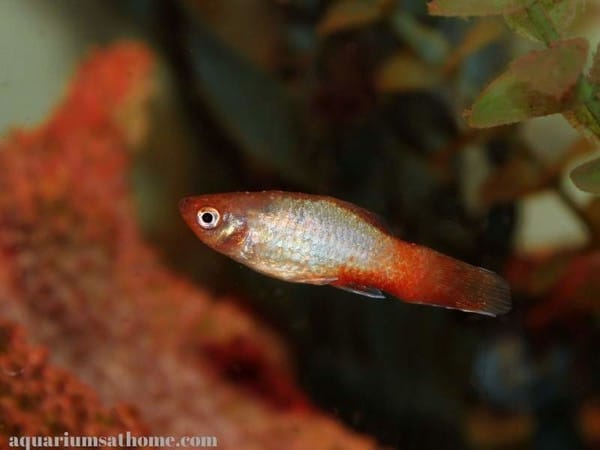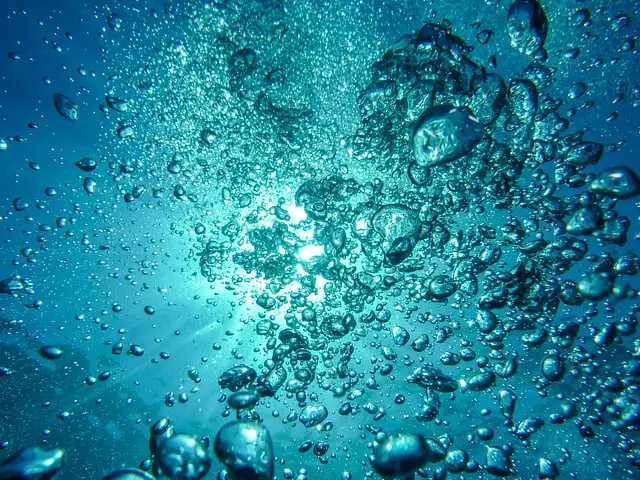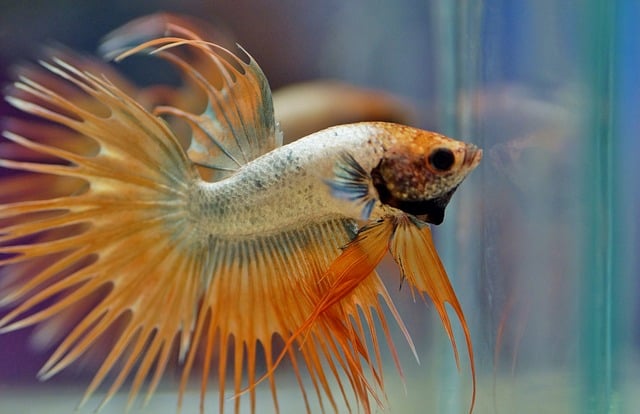A few months ago, I had some guppies that started looking weird. Their fins – which are normally fluttering around displaying as beautifully as they normally do – were closing. It reminded me of a handheld fan that stayed closed. The fluttering tail fins of my guppies were just like an unopened fan.
I hadn’t come across this issue before, so I needed to act quickly and learn what was causing this. In my research, here’s what I found out about clamped fins.
Clamped fins are not a disease. Clamped fins are an indication that there’s something else wrong or happening to your pet fish. Clamped fins can be caused by water that’s not the correct temperature, aquarium water that’s of poor quality, ich or velvet diseases can also be the cause of clamped fins before these parasitic diseases are visible.
With that short list of causes, you’d think it’s easy to keep your tank healthy enough to prevent this from happening and it is. Unfortunately, when we purchase new fish, they can bring diseases into the tank. As well, equipment such as heaters can start to malfunction over time. In this article I’ll talk more about the causes of clamped fins, what you can do to treat clamped fins as well as how to prevent it in the first place.
Let’s get right to it.
What Causes Clamped Fins in Fish? (Non-Disease Related)
As previously mentioned, there are 4 things that can cause clamped fins which we’ll go over more thoroughly. These might not be the only causes however, they are the most common. Just know that when you notice a fish’s fins start to clamp or close-up, there’s something wrong in the tank.
- Water temperature is more important than you might think. This just happens to be why my guppies started getting clamped fins. The heater wasn’t working properly and the water was getting cold. I do have a separate thermometer in that tank but neglected to check it regularly. Lesson learned.
- Most tropical fish are fine in temperatures between 75- and 80-degrees Fahrenheit (24 to 27 Celsius). Guppies like the water on the cooler end of that range where bettas or other tropical fish will do better at the higher end.
- A marine tank’s temperature should be in the range of 75 to 82 degrees Fahrenheit (24 to 28 Celsius).
- Of course, depending on the fish, you have the temperature will be better kept at the lower or high ends of these ranges.
- The water parameters should be one of your biggest concerns when keeping a healthy thriving aquarium. When I say water parameters, I’m talking about the ammonia, nitrite, and nitrate levels in the water. Here are what your tank levels read for both freshwater and saltwater.
- Freshwater aquariums ammonia = 0, nitrite = 0, ammonia less than 50ppm.
- Saltwater aquariums ammonia = 0, nitrite = 0 and ammonia less than 30ppm, unless you have a reef tank then the ammonia should be less than 1ppm.
The best way to check water parameters is to have a testing kit and conduct tests on your tank every 2 to 3 weeks. It takes 10 minutes, so you don’t really have a good excuse not to do it.
Make sure when you get a testing kit, you get one marked for freshwater or saltwater obviously, based on which type of tank you need it for.
Here are some excellent testing kits over on Amazon. You can’t go wrong with any product by API if that helps.

What Causes Clamped Fins in Fish? (Disease Related)
- Lastly, we’re talking about actual diseases that can cause your fish’s fins to start clamping up. This typically happens so fast you might not even notice the fins clamping until you see white or rusty spots on the fish. Let’s talk briefly about a couple of aquarium fish diseases that cause fish to clamp their fins.
- Ich is the most common freshwater fish disease. Ich is a parasitic disease that shows up as white spots on the fish’s body. The fish will start to rub constantly against objects and will most likely start to hide. Before the white spots appear or the fish starts rubbing you might notice clamping of the fins as a sign of sickness.
- Ich spreads fast so the best thing to do is get the infected fish out of the tank into a sick tank for treatment. Copper sulfate can be added to the tank for treatment. The sooner the disease is identified, the sooner you must treat the fish as at a certain stage of the parasite’s life it is hard to kill.
- Velvet disease also known as gold dust disease is another parasitic disease that travels quickly through the tank. Velvet disease affects both freshwater and saltwater tanks. Here are the symptoms and how you can try to treat it.
- Velvet disease symptoms include clamped fins, rubbing against objects, lethargy, loss of appetite, a rusty colored film starting to cover the fish, or the fish might be gasping for oxygen.
- To treat velvet disease, a copper sulfate can be used such as coppersafe, turning the temperature up a couple degrees, dimming the lights while treatment is ongoing and adding aquarium salt to freshwater tanks.
It’s very important if you notice any of these symptoms that you ‘take action’ immediately.
The reason for this is you want to catch all parasites as they are moving about the tank looking for hosts to infect. It’s at this point that they’re more easily treatable.
For tanks that get a treatment added to the aquarium, make sure to remove all carbon from the filter as activated carbon will absorb the chemicals. Once treatment is complete and the fish appear to be back to normal, go ahead and add a new batch of activated carbon to the tank.

Conclusion
To conclude, I want to take the important points from above and offer them to you here.
Clamped fins are caused by things as simple as the wrong water temperature to water parameters being out of whack and/or parasite being present in the tank. In sequence, it’s important to check the water temperature and parameters first.
If those things are okay, then I’d recommend starting treatment for ich and velvet disease by adding a copper sulfate to the tank or sick tank. Even if you don’t see white spots or a rusty film on the fish yet, by treating them at this stage, you’re preventing the parasites from taking hold and infecting the fish. You’ll hopefully save their lives by acting quickly.
If you need a copper sulfate product right now, here are some great choices over on Amazon.
It’s always a good idea to have a sick/quarantine tank setup for these rare occasions when our fish become ill. You don’t need a very big tank, unless you have monster size fish. A 5-gallon aquarium will work fine in most cases. It doesn’t cost very much to keep a 5-gallon up and running and since the tank typically won’t have fish in it, the maintenance is almost nothing. I would say check the water once a month and clean/top-up the tank as needed.
That’s it for this article. I trust I was able to help you and educate you a bit on why fish fins clamp. Good luck!
Related Posts
Why Put Salt in a Freshwater Aquarium?
Can fin rot kill a betta fish [what you can do to help]
Fish Skin Peeling: What You Need to Know?




